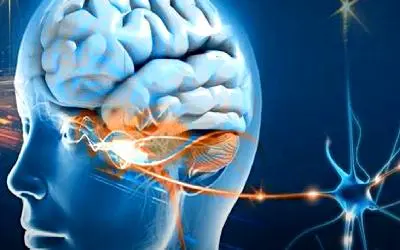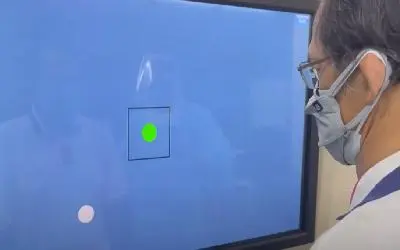As caregivers, we aspire for the optimal well-being of our children. Our desire is to ensure their safety, achievements, and contentment. However, for a parent facing an undiagnosed functional vision issue in their child, attaining these aspirations can prove to be exasperating.
Commonly, children affected by an undiagnosed functional vision problem encounter difficulties in tasks like reading and writing. What adds to the challenge is that a conventional eye examination might not uncover the issue. Surprisingly, numerous individuals with functional vision problems boast perfect 20/20 vision and maintain healthy eyes.
WHAT IS THE FUNCTIONAL VISION?
Functional vision is how the brain, eyes, and visual pathways all work together, allowing you to see and interact with the world.
These issues are separate from vision problems detected using a Snellen eye chart — in which you read letters from a wall chart.
The Snellen eye chart tests your ability to achieve normal visual acuity or sharpness of vision.
For most who struggle with this, lenses are prescribed to improve the acuity.
Functional vision, however, involves more than how the eye sees a 2D object like the eye chart. When a functional visual problem is present, one can have difficulty moving his or her eyes, focusing, or seeing three dimensional space.
It can also be hard to detect if only visual acuity is being assessed. It’s similar to having a torn meniscus in the knee. Although you are experiencing pain and a loss of mobility, an x-ray may not reveal any abnormalities.
Using the Snellen eye chart for a functional vision problem is the same concept. Like the x-ray, it’s not that the eye chart is inaccurate. It’s just not the right tool for diagnosing the problem.
WHAT ARE SOME TYPES OF FUNCTIONAL VISION PROBLEMS AND THEIR SYMPTOMS?
Before delving into what’s required for an accurate diagnosis, let’s briefly discuss the most frequent forms of functional vision issues:
1. Poor Convergence: When our eyes can’t focus on the same spot, it might cause seeing double or overlapping images.
2. Poor Laterality and Directionality: Some people might find it hard to tell left from right or recognize shapes in different positions. This can lead to mixing up letters or struggling with directions.
3. Poor Form Discrimination: Sometimes, it’s tough to spot small differences between things that look alike. This can make similar words or objects hard to tell apart.
4. Poor Span of Recognition: Some may struggle to read whole sentences or paragraphs, focusing on just one word or letter at a time. This makes reading slow and frustrating.
5. Poor Visualization: Being unable to picture things in your mind can make spelling, math, and understanding written words tough.
6. Poor Tracking: When tracking moving things, like lines of text or a ball, gets tough, it can make reading or playing sports challenging.
7. Poor Orientation: Trouble understanding where you are compared to things around you might lead to clumsiness or finding it hard to sit still.
8. Poor Focusing: Difficulty keeping text sharp while reading or experiencing eye strain and headaches can happen when the focusing system isn’t working well.
People dealing with functional vision problems commonly encounter a blend of these symptoms.
WHAT IS LIFE LIKE FOR THE PERSON SUFFERING FROM A FUNCTIONAL VISUAL PROBLEM?
A functional vision issue transforms everyday tasks into significant challenges. For a student in class, tasks like transcribing notes from a board or reading a textbook, which are effortless for other classmates, become exceptionally hard.
HOW IS IT BEST TREATED?
Vision therapy tackles the fundamental issues behind functional vision problems. It employs exercises that enhance the underperforming visual skills and gradually trains the visual system to operate effectively.
These exercises encompass a range of tools like lenses, prisms, optical filters, computer programs, devices for sensory-motor integration training, and similar aids.
The most impactful results in restoring functional vision come from consistent vision therapy sessions, conducted both at the office and at home.
WHO IS IDEALLY SUITED TO TREAT FUNCTIONAL VISION PROBLEMS AND WHY?
Currently, the majority of vision screenings involve reading letters on a distant eye chart, focusing less on assessing functional vision.
Conducting a comprehensive evaluation of functional vision demands specialized expertise and equipment. The developmental optometrists at The Vision Therapy Center possess this additional training. They can perform a thorough assessment covering visual information processing, binocular function, and other vital visual skills.
Just like addressing any health issue, effectively treating a functional vision problem starts with an accurate diagnosis. After all, without knowing the cause, it’s challenging to treat the symptoms of a problem.
The Neuro-Developmental Optometrsist at The Neuro Vision specialist are experts at both diagnosing and treating functional vision problems, enabling patients to be successful in school, work and life.
But the first step toward the cure – and ending your child’s struggles in school – requires evaluating the problem.
Click Here to schedule an appointment or please call us at +603-76138468.



